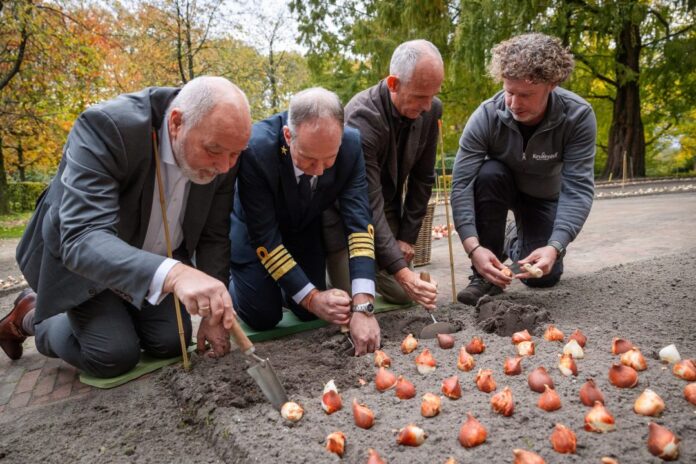- Holland America Line announced the creation of a new, exclusive tulip variety to celebrate its Dutch heritage and maritime legacy.
- The ceremonial handover of the first bulbs took place at the iconic Keukenhof Gardens in the Netherlands.
- The tulip is expected to bloom and receive its official naming ceremony in April 2026.
- HAL views the flower as a living symbol of the brand’s defining characteristics, such as elegance, warmth, and attention to detail.
Holland America Line (HAL) has announced the creation of a new, exclusive tulip variety as a vibrant tribute to its Dutch heritage and long-standing maritime legacy, which originated in Rotterdam in 1873. The custom-cultivated flower is intended to be a living symbol of the cruise line’s elegance, warmth, and commitment to genuine hospitality.
The ceremonial handover of the first tulip bulbs took place at the iconic Keukenhof Gardens in the Netherlands, known globally as the Garden of Europe. Captain Jeroen Baijens of HAL’s flagship, Rotterdam, presented the bulbs to Keukenhof representatives, marking the official start of the process.
The new tulip variety is scheduled to bloom and make its official debut in April 2026, followed by a formal naming ceremony at the gardens. Once unveiled, the flower will be featured in various select gardens and events, symbolizing HAL’s ongoing dedication to preserving and celebrating its traditions, including the use of fresh flowers onboard its ships and its renowned service standards. This initiative joins the line’s other cultural tributes, reinforcing the brand’s authentic connection to the Netherlands and its 150 years of exploration.

Keukenhof, widely celebrated as the Garden of Europe, holds profound historical and contemporary significance for the Netherlands’ floriculture sector. Its origins trace back to the 15th century, when the area served as hunting grounds and a “kitchen garden” (hence the Dutch name Keukenhof) for Countess Jacoba van Beieren, who lived at the adjacent Castle Teylingen.
The park’s current layout is rooted in an English landscape style redesign dating back to 1857. However, the modern Keukenhof as a public spectacle was born in 1949 when a group of 20 Dutch flower bulb growers and exporters conceived the idea to use the castle gardens as a vibrant spring exhibition and a global marketplace. The park opened to the public in 1950 and was an instant success, attracting over 236,000 visitors in its inaugural year.
Today, Keukenhof is crucial to the Dutch economy and cultural identity, functioning as the international showcase for the floricultural sector. Each year, over 7 million flower bulbs representing more than 1,600 varieties are planted by hand by roughly 100 exhibitors, displaying a living catalog of the country’s main export. The gardens are only open for approximately eight weeks every spring, yet they attract over a million visitors annually, with 80% originating from abroad. This makes Keukenhof a global icon and a powerful driver for related tourism sectors, including hotels, catering, and transport.
